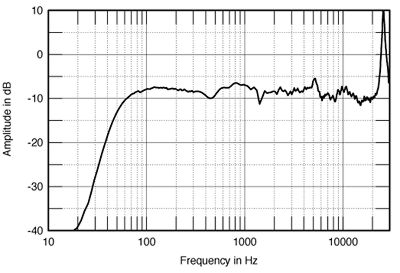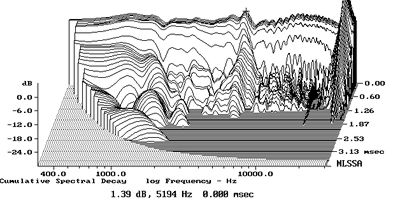I understand the concerns regarding sighted listening and with prior knowledge of measured performance.
These are not the only speakers which produce high levels of HD (2.5dB @ 1.6kHz) at the top of the mid-woofer's passband. Was this level of distortion not objectionable f.e. with the HDI-1600 (2dB @ 1.9kHz) which on top of that produces a much more problematic decay?

This is what @amirm had to say about the JBL:
II put the JBL HDI-1600 on my typical test stand in my listening room with a single parametric EQ to dial out a room mode as I do with all other speakers (verified in this instance to definitely make a positive contribution). The sound from the JBL HDI-1600 in a word is stunning! That extra bass and very good power handling gives full satisfaction. The flat mid-frequencies means all the detail is presented as it should making for a delightful contrast with that bass response.
I put in a little filter to boost where the dip is. It made a tiny difference, providing just a hair more brightness and sparkle. I was OK with or without it.
The sound was so good I sat there listening to track after track. Sans nasty room modes, this is a speaker that is designed to give you the "target room response" without having to use a room EQ to get there.
With 1000 watts on tap and just a single speaker playing, I finally managed to get it to cry uncle and bottom out but that was quite loud. Funny thing, it produced so much bass that combined with its smooth plastic base, it slid back 1 inch on my metal stand!
JBL level of distortion of 2%, which equals to -34dB, is indeed spot on with the one measured for IL10, except that with JBL it looks a bit wider. And still JBL got stellar marks on listening test while IL10 miserably failed. In that context blaming distortion looks pretty much as rushing into conclusion. If testing of IL10 is indeed a research project (as topic title implies) one would expect much more analysis before reaching such conclusion. For example, I made an EQ filter for IL10 to be compared with M16 and suggested repeating the listening test but it was not done as "new speakers are waiting to be tested".
I can understand that one always have to choose between quantity and quality, and it's ok if quantity is a priority, but research cannot be done if focus is not set on quality. When doing research one must accept that numerous tests have to be performed with the same speaker, not only by comparing it with different speakers but also using different EQ filters to listen what is really happening with the perceived response. In that context, either current approach is wrong or "research project" shouldn't be in the thread title.


